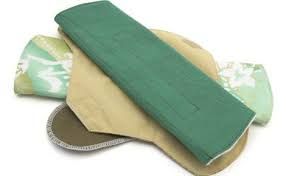Sustainable Green Menstruation
Jun 04, 2019 • 13 views

We may silently roll it in bundles of newspapers and dispense it at the nearest garbage disposal bin without giving a second though to its tenacious fate of degradation. Considering 36 per cent of menstruating women use sanitary pads on an average of 8 pads per cycle, over 12.3 billion disposable sanitary pads are presumably generated every year. These pads with over 90 percent plastics and each equivalent to 4 plastic bags, are stated to be dispensed in the following manner by the Ministry of Drinking Water and Sanitation :

The Solid Waste Management Rules of 2016, mandates the manufacturers or brand owners of sanitary pads to aid the local authorities by providing requisite financial assistance to create waste management systems for sanitary pads and ensure effective collection systems to take back the packaging waste of their products.
But like the aphorism goes, ‘Rules are but meant to be broken’ , nothing such happened.
The taboo around menstruation discourages women to dispose these waste in the dry waste bin andhanded over separately. The waste collector separates the two by bare hands, making them more prone to HIV and Hepatitis. The sanitary pads Super Adsorbent Polymers (SAPs) further lead to water clogging and contamination.
The Panaji instance where it took initiative to collect sanitary waste and regulate its incineration , despite its limited capacity to reach out is praiseworthy.
In tough times like these where environment degradation and its after effects recur elaborate discourses, it becomes imperative to create ways for a sustainable green menstruation. Given the affordability and environmental stakes, cloth is an effective alternative. Using handmade cloth, just like olden days, is gaining momentum once again. Promoting reusable sanitary cloth pads and educating women on the multi-fold benefits of green menstruation is the need of the hour.
From Goonj’s menstrual hygiene initiative ‘Not just a piece of Cloth’ and its ‘MY Pad’ initiative , more than 5 million cloth pads have been made accessible across India. The likes of ‘Eco Femme’ by founder Kathy Walking, an Australian who started producing washable cloth pads down South owing to her past experiences of its disposal; another being Kamakhya which heralded by Laad Lohar, an Adivasi woman from Udaipur who fashions these cloth pads during her free time and teaches other Adivasi women to make it too, are working towards a noble cause.

The fact that cloth was, is and will forever be a viable only is underpinned only when it is done in adherence to the basic priniciples of hygiene. The innumerable women who cannot access nor afford disposable pads, a clean cotton cloth pad is not just cheaper but ecofriendly, scalable, reusable and sustainable most importantly.
This leads to the daunting of one prominent realization, : ‘Are we back to square one yet?’
